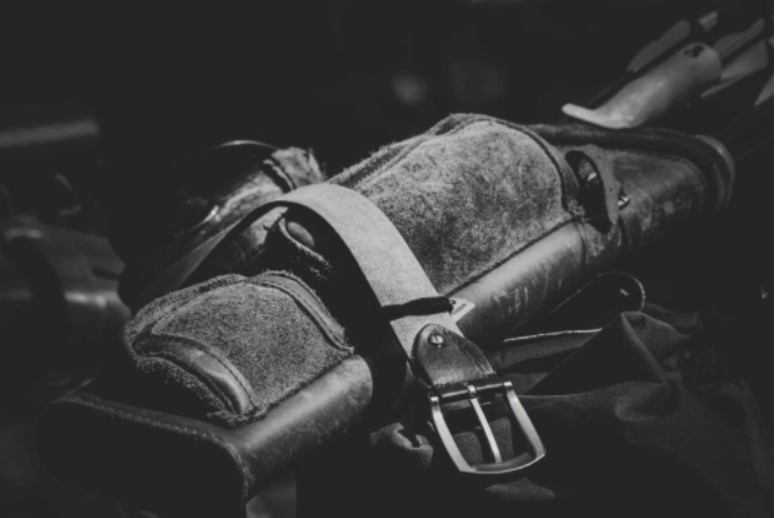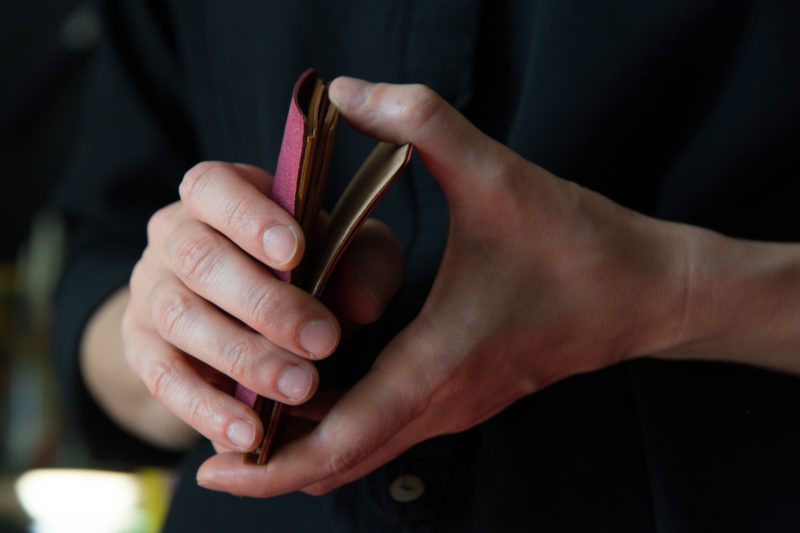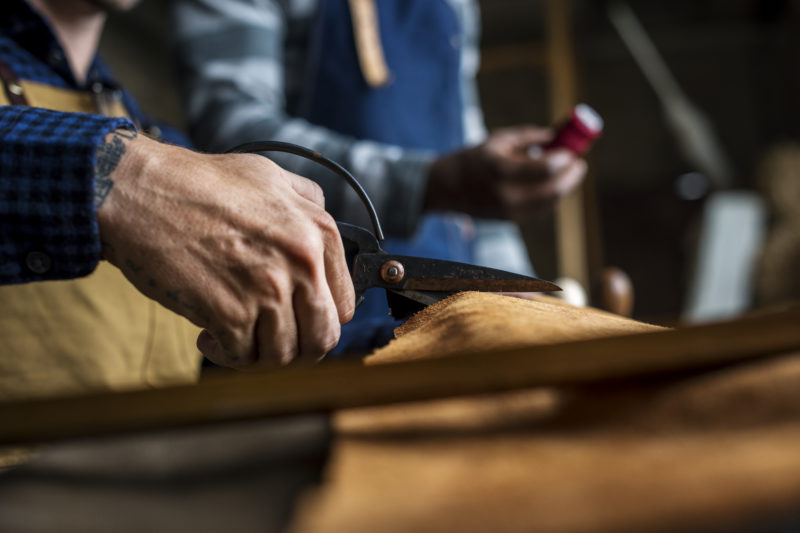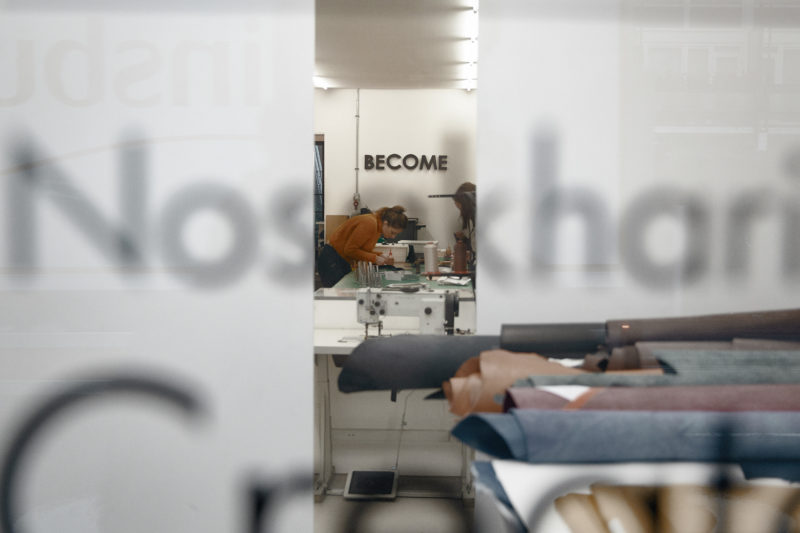Sustainable Leather Goods Using Vegetable Tanned Leather
With sustainability in front of mind for all industries, including the leather manufacturing industry, CreateLab investigates the sustainable option of producing leather goods.
Leather’s Rich History

Possibly the most primaeval fabric used by humans, leather is a multi-billion-dollar global industry. Demand for leather goods is increasing annually – but so is a critique of its harsh environmental impact, which is pushing a keen interest in sustainable options.
In our search for creating a sustainable alternative we find, leather manufacturing not only serves social needs by using a meat by-product but also provides significantly to the global economy through trade and employment. But the social image of the leather industry is becoming increasingly hostile, so we look at the positives or sustainable options for producing leather goods.
“First things first, what exactly is leather tanning?”
Leather tanning, in its essence, is all about transforming animal skins into authentic leather. The conversion of animal skin into a piece of leather is accomplished by eradicating water molecules from the collagen of the skin, (a protein that skin consists of). Nevertheless, when drawing out the water, the skin might get damaged, as it gets dry and rigid. Thus, since prehistoric times, leather manufacturers have soaked the skins in natural tannins to dehydrate the leather, which replenishes the water molecules and binds with the collagen, avoiding the part where the leather goes stiff and inflexible. These vegetable tannin solutions are rendered up of organic matter present in trees (such as oak, chestnut or mimosa), or many other types of trees and plants.
A Sustainable Leather Tanning Process
Leather is an animal hide that is cleansed of hair, treated (or ‘tanned’) to preserve it and then finished with a colour, embossing or texture. Leather manufacturers then turn this material into footwear, accessories, clothing, interior and car upholstery.
The type of leather tanning process used by leather brands might seem like an obscure and insignificant part of your buying decision process. That is maybe why the majority of brands use the cheapest and not surprisingly most toxic method of leather tanning available: namely chrome tanning.
Why is this method of tanning leather classed as such an unsustainable method, and how does it compare to the vegetable tanning?
The Downsides Of Chrome-tanning In The Leather Industry

In the infinite mission to reduce the production cost, most brands turn to low-quality leather production when they turn to mass-producing chrome tanned leather products, and this dramatically reduces the lifespan of a chrome tanned leather product.
Chrome tanned leather itself guaranteed to disintegrate much earlier than any vegetable-tanned leather equal. In addition, the cost-cutting production procedures for chrome tanned leather products comprise treating the edges of these leather bags with acrylic varnish. The varnish causes the material to crack in a few years, as a substitute of using techniques like turned edges or burnishing (which take more time but creates a product that lasts for years) furthermore decreasing its life expectancy of use. Many brands struggle with negotiating their integrity by pursuing volume and profits at the cost of quality and lifespan of the leather, all while doing substantial harm to the environment.
A Modern-day Solution Is To Use Vegetable-tanned Leather
Using veg-tan leather is a perfect example of where age-old traditions and processes can be used in providing a modern-day solution.
Animal hide, originally a by-product of the Food Industry, requires only a 100% natural substance extracted from vegetable sources: tannin to create the beautiful leather material.
The metal-free tanning process allows for a leather produced with meagre environmental impact. On top of that, it is highly environment-friendly and with substantial biodegradability property.
Fibres removed from the hides are recycled to make agricultural fertiliser and waste from the depuration process is recycled to create bricks for the construction industry.
Vegetable Tannin Respects The Environment
The most widely used plant sources for tannin extraction on an industrial scale are Chestnut and Quebracho wood and Tara pods. The supply of raw materials respects the natural balance, since they come from responsibly managed forests, and it is subject to strict regulations and controls by the national authorities. Tannin producers are the first to protect the woods, to guarantee the procurement of the raw material over time. The tannin industry has thus contributed to preserving the forest heritage against building and construction industry and intensive farming. Indirectly, this has also supported the local economy, keeping rural and wooded areas from abandonment.
Environmental Impacts Of Chrome Tanners
Contrasting vegetable tanned leather, chrome tanners don’t use raw hides, but instead, pre-treated skins are put through an initial tanning process where the hides come out with a distinct blue colour. The fundamental tanning theories are the same: water molecules are removed from the collagen of the skin but using chromium salts instead of tannins.
The chrome ions shifting the water are smaller than vegetable tanning molecules which usually makes chrome tanned leather thinner and softer than vegetable-tanned leather. The process is generally achieved by placing hides in acidic drums or baths, consisting of a mix of chemicals. This creates tons of toxic wastewater that if left untreated, can cause substantial environmental impacts.
Express Your Individuality In Today’s Society
Our CreateLab was founded because we couldn’t find the right leather goods manufacturing company in London to produce our line of products – Nosakhari. Well, to be perfectly honest, we found a few but was extremely disappointed with the quality of service we received.
After a few painful experiences, we got tired of manufacturers diluting our design concepts and some leather goods factories refusing to respect our original design ideas. Either because of the lack of care and passion for design or because they couldn’t be bothered to pay attention to the little details.
In short, we founded CreateLab to offer the level of quality and services we couldn’t find anywhere else. Contact us to discuss your leather goods project.
Related Articles
A GUIDE TO LEATHER GRADES
FIVE TIPS ON RECOGNISING GENUINE LEATHER FROM FAKE LEATHER
WHY LEATHER MANUFACTURERS CARE WHEN SOURCING THEIR GOODS
A BRIEF HISTORY OF LONDON’S LEATHER INDUSTRY AND WHAT WE HAVE LEARNT FROM IT
LUXURIOUS LEATHER CHECKLIST: WHAT TO KNOW BEFORE YOU BUY
7 PLACES TO FIND QUALITY GENUINE LEATHER IN LONDON
8 BENEFITS OF MANUFACTURING YOUR LEATHER GOODS LOCALLY
HOW TO STORE YOUR LEATHER GOODS






